For many years the Waseca County Timeline had been a project waiting for attention. It was in 2011 that the project gained traction. It was the new Minnesota Arts & Cultural Heritage grants program that became a potential resource for significant funding. The Minnesota Historical Society became its administrator providing the online request portal and the process for accountability. More significant to the over 100 rural historical organizations is that approvals would ensure distribution to all areas of Minnesota, not just the metro area. We also became aware that Legacy funds could be used to hire an outside professional exhibit design firm to complete the project. Now after many grant requests rejected, rewritten, and eventually approved, the Timeline of Unique Stories exhibit is a reality. Abiding by museum and ADA standards, the exhibit is permanent. And yet someday there will be additions and some stories exchanged for other unique stories. For the time being, it is here for all to learn from and enjoy!
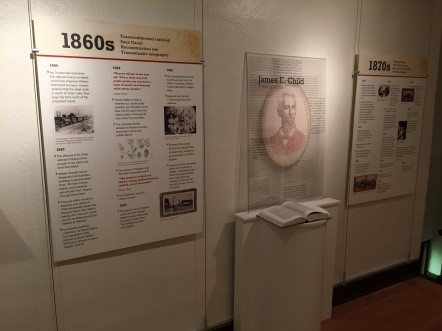
This innovative exhibit of over 150 years of Waseca County history opened October 8, 2015.
View our Online Interactive Timeline
The museum balcony had been in preparation since 2005. That was the year that the entire collection was re-evaluated, photographed and re-stored more efficiently--an enormous effort. But the vision was to reinvigorate the museum's exhibits utilizing the spaces on the balcony. During the next few years, track lighting was installed, the floors were refinished, and two walls were removed on the west balcony. Next, a contemporary hanging system of vertical cables and connectors was funded by the Carl and Verna Schmidt Foundation. Then WCHS won its first Legacy grant to partially fund a lift to the balcony and a new main floor bathroom. On October 8, 2015 we welcomed the public, members, donors, government officials to view our new permanent exhibit, "The Timeline of Unique Stories from Waseca County."
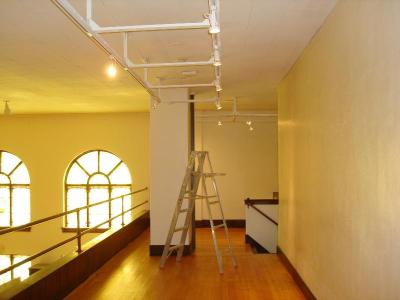
Between May 19 and July 19, 2015, the Waseca County History Center invited the County community and visitors to participate in a "Community Comment" period. The Timeline Panels of over 150 years of county historical highlights were printed on banner material and displayed at the museum and at the Waseca County Fair. We got revisions. We got comments on content. We got support for the project and anticipation for the finished exhibit---all this before the final production. Community input and collaboration are important elements to grant-funded projects of this size.
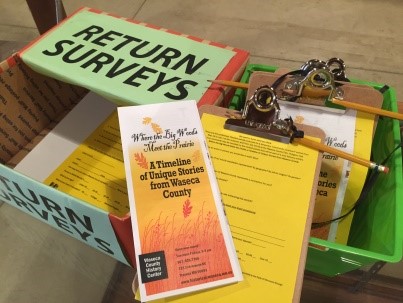
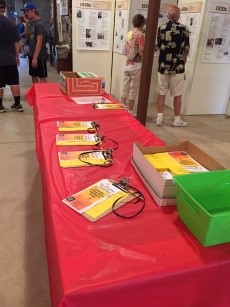
The physical design was inspired by our own Maplewood Park. How can you tell? Look carefully at the subtle patterns printed on the cases. The exhibit designers observed the natural beauty of the big woods oak, maple and basswood, and visualized the historical events of the Chautauquas, carriage paths, picnics, the Boy Scouts and Girl Scouts campsites, and the birders and naturalists who walked the paths of Maplewood Park. Its big woods are remnants of the vast forests that once covered so much of pre-settled Minnesota. The clearing of land provided vast agricultural growth across the western and southern parts of the state. Comparing old maps, it is clear that the remnant woods bordered the western prairie right through many counties including Waseca County.
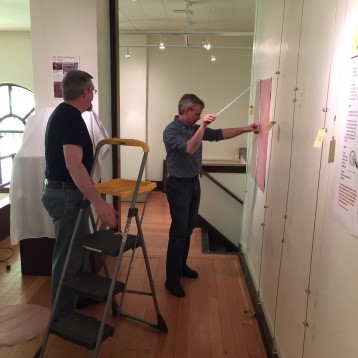
Bret Pearson and Larry Hutchings, Museology Exhibits, shown preparing for installation.
We wanted our timeline exhibit to compete in a positive way with other local tourist sites. Would it instill interest and pride by area residents? We needed to focus on the most unique stories. More stories will be developed. Each requires research, documentation, writing, editing, visuals, design, production, funding and time.
Here are some of our criteria for our Unique Stories:
Can you find the answers?